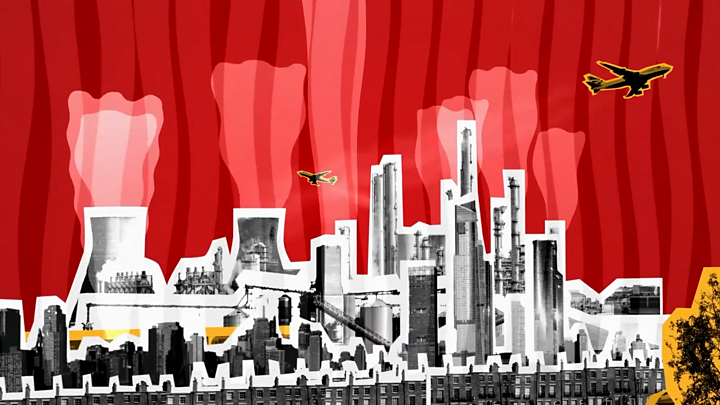Media playback is unsupported on your device
"The moment of crisis has come" in efforts to tackle climate change, Sir David Attenborough has warned.
According to the renowned naturalist and broadcaster, "we have been putting things off for year after year".
"As I speak, south east Australia is on fire. Why? Because the temperatures of the Earth are increasing," he said.
Sir David's comments came in a BBC News interview to launch a year of special coverage on the subject of climate change.
He told me it was "palpable nonsense" for some politicians and commentators to suggest that the Australian fires were nothing to do with the world becoming warmer.
"We know perfectly well," he said, that human activity is behind the heating of the planet.
What does Sir David mean by 'the moment of crisis'?
He's highlighting the fact that while climate scientists are becoming clearer about the need for a rapid response, the pace of international negotiations is grindingly slow.
The most recent talks – in Madrid last month – were branded a disappointment by the UN Secretary-General, the British government and others.
Decisions on key issues were put off and several countries including Australia and Brazil were accused of trying to dodge their commitments.
"We have to realise that this is not playing games," Sir David said.
"This is not just having a nice little debate, arguments and then coming away with a compromise.
"This is an urgent problem that has to be solved and, what's more, we know how to do it – that's the paradoxical thing, that we're refusing to take steps that we know have to be taken."
What are those steps?
Back in 2018, the UN climate science panel spelled out how the world could have a reasonable chance of avoiding the most dangerous temperature rises in future.
It said that emissions of the gases heating the planet – from power stations and factories, vehicles and agriculture – should be almost halved by 2030.
Instead the opposite is happening.
The release of those gases is still increasing rather than falling and the key gas, carbon dioxide, is now in the atmosphere at a level far above anything experienced in human history.
As Sir David put it: "Every year that passes makes those steps more and more difficult to achieve."
Why does this matter right now?
This year is seen as a vital opportunity to turn the tide on climate change.
The UK is hosting what's billed as a crucial UN summit, known as COP26, in Glasgow in November.
Ahead of that gathering, governments worldwide are coming under pressure to toughen their targets for cutting emissions.
That's because their current pledges do not go nearly far enough.
Assuming they are delivered as promised (and there's no guarantee of that), there could still be a rise in the global average temperature of more than 3C by the end of the century, compared to pre-industrial levels.
The latest assessment by the UN's Intergovernmental Panel on Climate Change (IPCC) lays bare the dangers of that.
It suggests that a rise of anything above 1.5C would mean that coastal flooding, heatwaves and damage to coral reefs would become more severe.
And the latest figures show that the world has already warmed by just over 1C.
What happens next?
As things stand, further heating looks inevitable.
"We're already living in a changed world," according to Professor Ed Hawkins of the University of Reading, a scientist whose depictions of global warming have often gone viral on social media.
He uses bold coloured stripes to show how much each year's temperature is above or below average – different shades of red for warmer and blue for colder.

Media playback is unsupported on your device
The designs now adorn T-shirts, scarves and even a tram in Germany.
At the moment, Prof Hawkins uses dark red to denote the highest level of warming, but regions such as the Arctic Ocean have seen that maximum level year after year.
Such is the scale of change that he's having to search for new colours.
"I'm thinking about adding dark purple or even black", he told me, to convey future increases in temperature.
"People might think climate change is a distant prospect but we're seeing so many examples around the world, like in Australia, of new records and new extremes."
Read More – Source



